Learn how to make Fermented Hot Sauce – a simple way to enhance and preserve your abundance of garden chilies to use throughout the winter. Full of healthy probiotics, this easy recipe has many health benefits. Plus it just tastes good! Video.
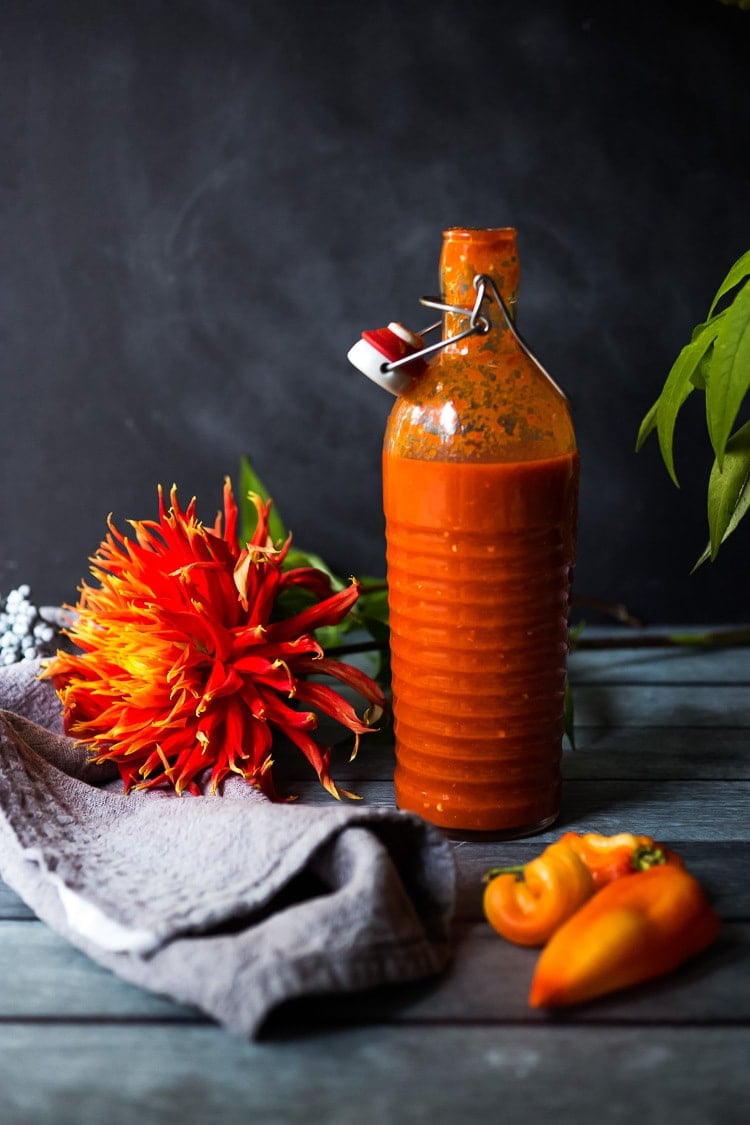
For many of you with gardens out there, this is the season of harvesting. Here’s a simple way to use all those chilies you’ve got growing out back and turn them into something that will bring you a little kiss of sunshine during the cold months – Fermented Hot Sauce! Now, before you feel intimidated – know that this only takes 20 minutes of actual hands-on time and no special equipment. It’s ridiculously easy!
Why I prefer fermenting over canning:
- Healthier: Fermentation creates “ALIVE” food- incredibly rich in probiotics. These good bacteria are living creatures that work with our microbiome to improve digestion, boost immunity, and prevent disease. Having a diverse microbiome is healthy! Canning “kills” all these healthy probiotics through the heating process.
- Taste: I prefer fermentation over “canning” because fermentation keeps these healthy bacteria alive, and as a result, the fermented food actually tastes better and better with time! Canning halts the development of flavor.
- It’s easier: Canning requires more hands-on time.
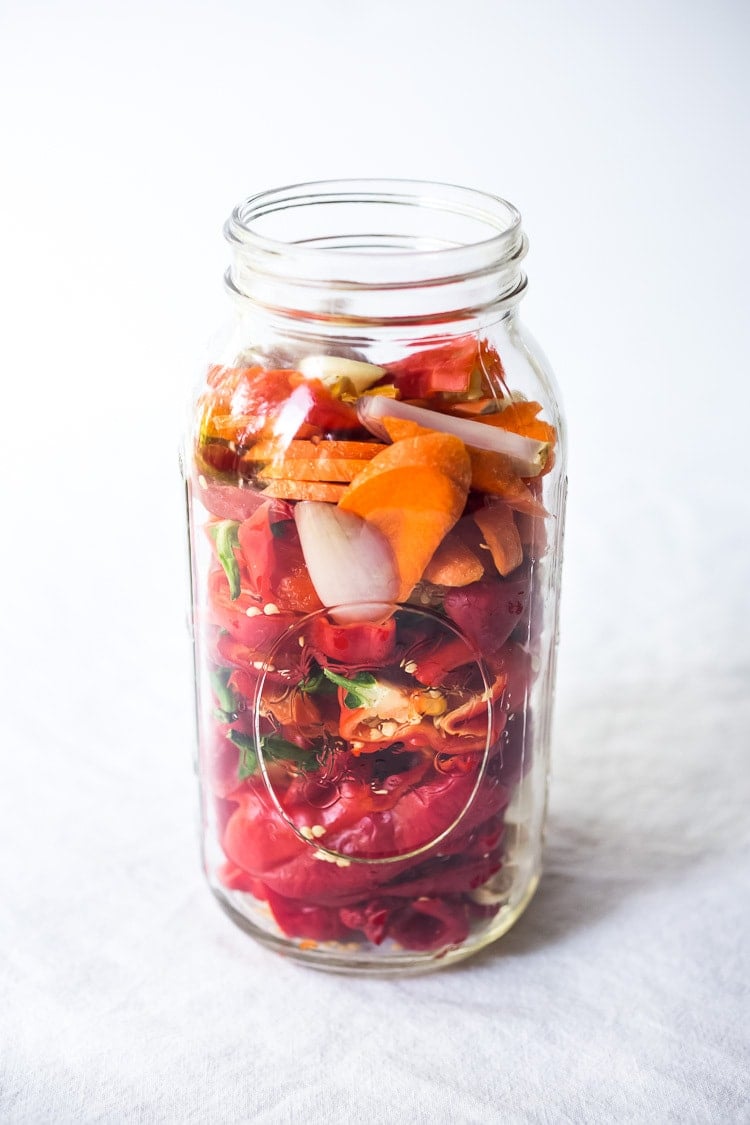
How to make Fermented Hot Sauce:
Step one: Fill a clean 2-quart jar with any type of fresh hot chili, onions, garlic and thinly sliced carrot. You can use bell peppers to temper the hot chilis if you want a milder version. Just stick with the same color palette so your fermented hot sauce stays colorful and vibrant.
In this recipe, I used Padrone Peppers, a Spanish variety that had turned red, which I found at our farmer’s market. But feel free to use any kind you want or a blend. You’ll need about 1 pound in total. (You can easily halve this recipe)
Step two: Make a saltwater brine, using 1 1/4 teaspoons fine sea salt, per 1cup of water.
Salt Ratio for Fermentation:
Having the right proportion of salt to water is important. Not enough salt may allow unhealthy bacteria to grow. Too much salt will kill all the bacteria and the chilies won’t ferment. If you need to add more water to the jar, then add salt accordingly.
Use 1 1/4 teaspoons fine sea salt per 1 cup of water. This is roughly a 3% Brine (3 grams of salt per 100g of water).
Here, I used 5 cups of water, so I added 1 1/4 teaspoon salt x 5 cups water = roughly 6 1/4 teaspoons of fine ground sea salt. Heating the water slightly helps the salt dissolve.
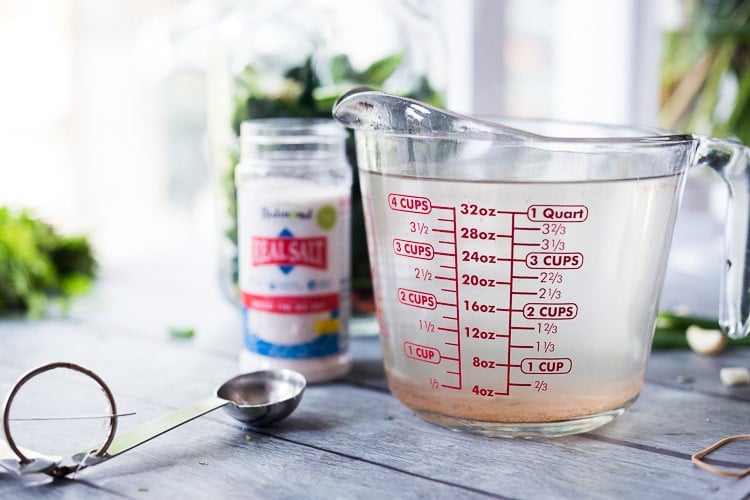
Step Three: Combine! Pour the brine over the chilies and push them down so they are completely submerged under the brine. Feel free to cover the chilies with a cabbage leaf to keep everything down, then weigh them down.
Step Four: Weigh down the chilies. You can use a fermentation weight, like this version that I really like, that will fit perfectly into a mason jar, to keep everything submerged. If anything floats to the top, and touches air, this can potentially mold, so either fish it out with a slotted spoon, or push it down under the brine.
Or in a pinch, a zip lock bag filled with water can be used as a weight, just place this over top. I prefer using a glass or ceramic weight.
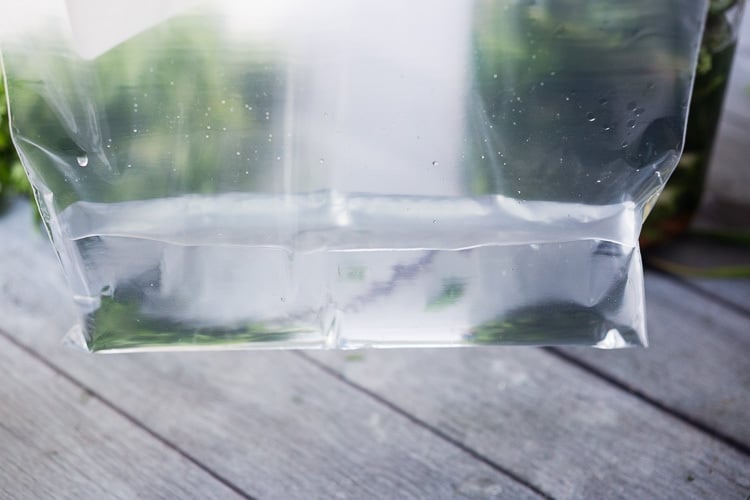
The water in the bag will work as the fermentation weight here. A small clean shot glass, placed over a cabbage leaf, can also act as a fermentation weight as well.
Here you can see I’m working on a mild green hot sauce which is in the fermenting phase still.
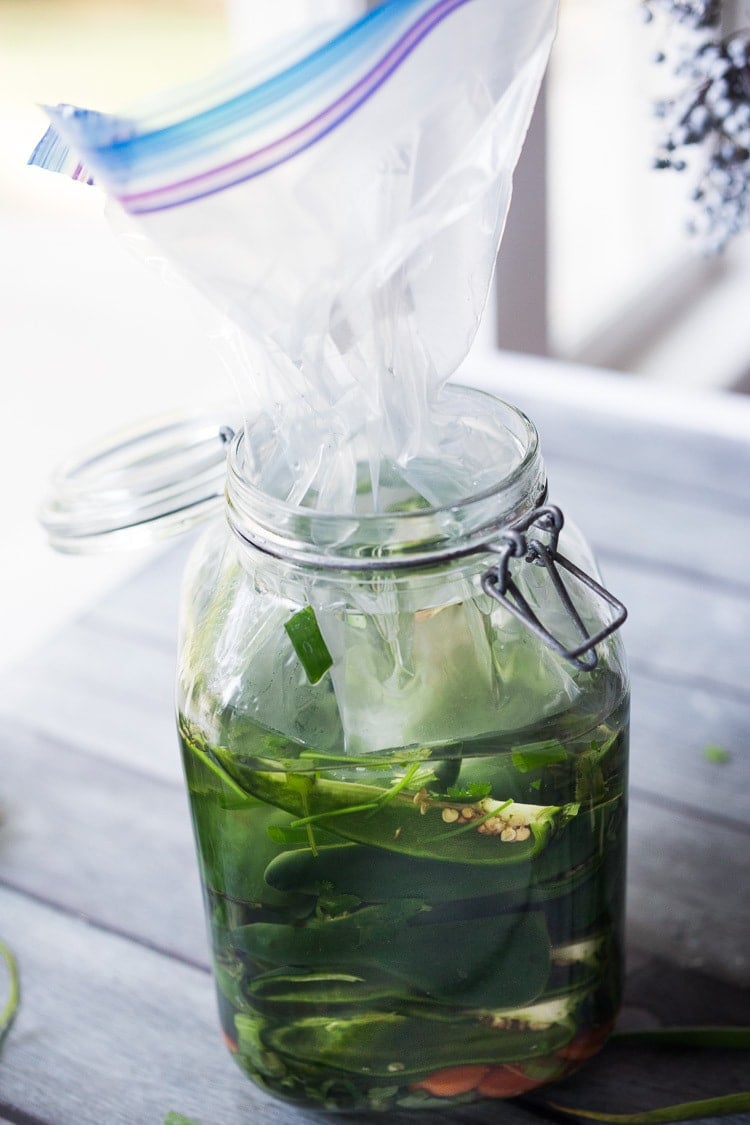
Step Five: Place a lid on top, leaving it loose. You want the fermentation gasses to be able to escape while keeping any creatures (bugs, flies) out. A couple of layers of cheesecloth also work here.
Step Six: Place the jar in a bowl or pan to catch any liquid that may spill over, and place it in a cool, dark place, like a basement. 65F-70F is ideal. If you don’t have a basement or a cool place, a lower cupboard in the kitchen is an option.
Check every few days, removing any “floaters”. After a few days, the brine will turn slightly cloudy, and when you tap the jar, you should see little bubbles float to the surface or some overflow on the pan- all signs of life!
Ferment 5-10 days. I usually go 7-12 days, long enough to soften those carrots, which you will be blending up in the sauce.
If, for some reason, you are going out of town, you can always place the ferment in your fridge, which will slow it down, but keep it alive, and you can resume when you get back.
Why is the Brine Cloudy?
Cloudy, tangy brine is a natural by-product of the fermentation process- a combination of lactic acid and yeast- and is the reason why they call it Lacto-fermentation.
Various strains of bacteria are present on the surface of all plants, especially ones growing close to the ground. Lactobacillus bacteria convert sugar into lactic acid, preserving the peppers.
Both salt and lactic acid prevent the growth of harmful bacteria. Over time, the cloudiness can settle out of the brine to the bottom of the jar. Some batches are naturally cloudier than others, but all are safe to consume.
A cloudy brine is a sign that you have a safe, successful, and tasty ferment.
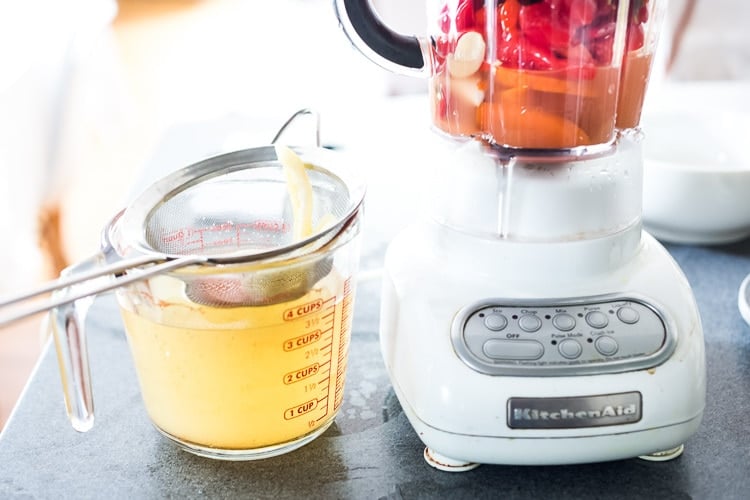
Step 7: Blend! Strain the brine, saving it. Add the strained chilies/carrots/garlic to the blender with one cup of brine and blend until smooth, a least a minute! At this point, you can add herbs (oregano or cilantro is nice here) and spices (cumin, coriander, chipotle). Add a little splash of Braggs apple cider vinegar if you like (this is optional but also full of healthy bacteria) and more brine to desired consistency.
If you like the idea Sriracha, you could also make it sweet by adding sugar or honey, and perhaps ginger. You could also add herbs.
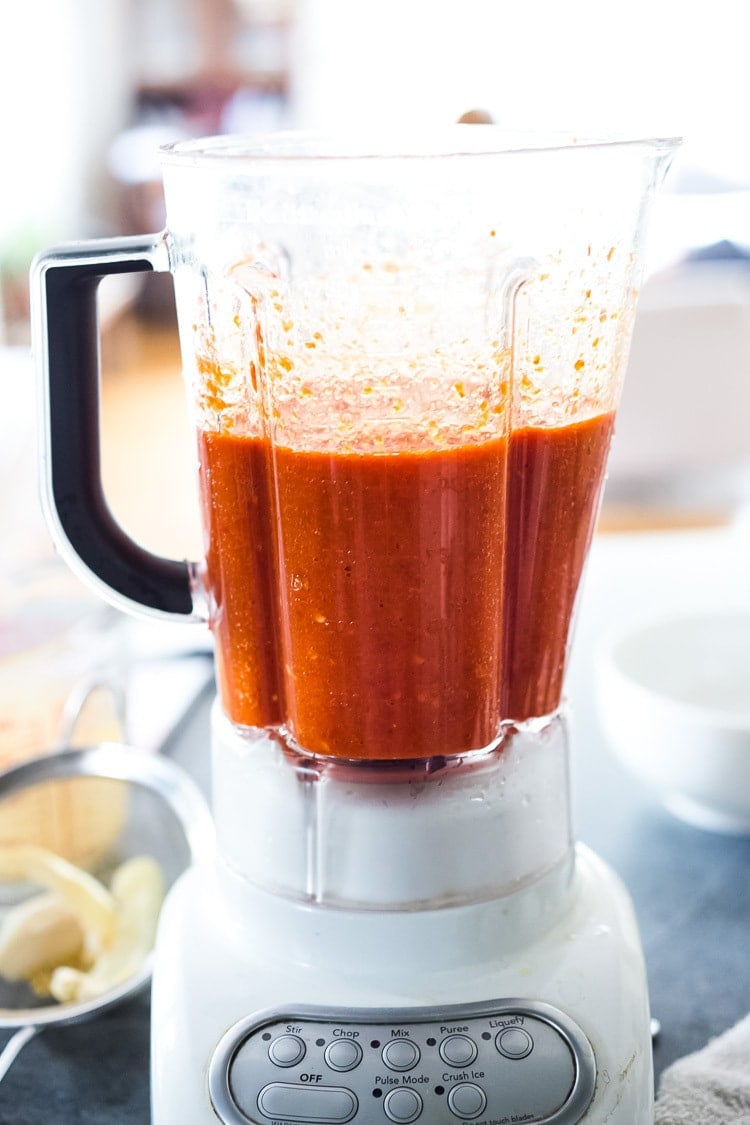
Step 8: Store! For everyday use, store the fermented hot sauce in squeeze bottles– leaving the tip off or open (or lightly closed) in the fridge. The hot sauce will continue to ferment in the fridge, and the open tip will allow the gasses out. Before using, cover the tip with your finger and give it a good shake.
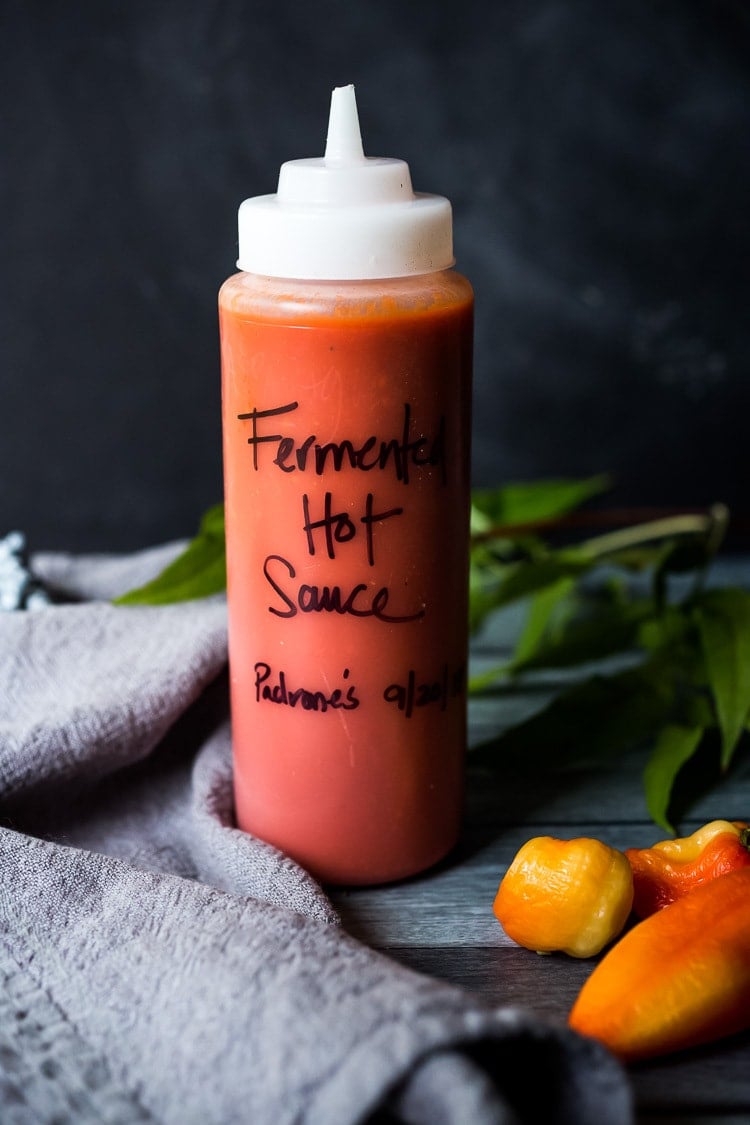
A little Warning!
If you place the fermented hot sauce in tightly sealed bottles, unrefrigerated, they will EXPLODE! This is because the hot sauce is still fermenting (producing gases) and will continue to create bubbles. Remember, it is alive, and this is NOT canning.
*If giving as a gift, yes, feel free to use a “cute bottle” but with instructions to refrigerate and loosen the lid.
But my hot sauce is way too hot!
Don’t be too alarmed if your hot sauce tastes overly hot when you first store it. After a week or two in the fridge, the gradual slow fermenting will substantially mellow out the heat! It’s quite surprising. Many times, I’ve made a hot sauce and tried it, thinking there was no way we would be able to eat it because of the heat level. But after a week or two, it really does calm down the heat. Fermenting the hot sauce gives it another layer of flavor, adding more and more complexity. This will keep indefinitely in the fridge.
Types of chilies to use:
Use any fresh chili pepper you like or a blend of different peppers (in the same color palate). To temper the heat, feel free to add similarly colored bell peppers (red, yellow, or green bell pepper). For example- add a golden bell pepper to habaneros to temper the heat. Or a green bellpeper to serano chilies.
Keep in mind you will be blending the sauce, so stick with the same color palate to make a vibrant-colored sauce. For example, mixing red and green peppers will yield a brown hot sauce- not the prettiest, but up to you. 😉
Also, keep in mind that fermentation will mellow out the heat of the peppers over time.
I am hearing that frozen peppers can be fermented ( please read the comments), but have not personally tried this.
Helpful tools
- Fermentation Kit (optional)
- Fermentation weights
- 2-quart mason jar (8-cup mason jar)
- Blender
- Strainer
- squeeze bottles
Making Fermented Hot sauce is a fun little project that only takes about 20 minutes of hands-on time. A lovely way to use up all the chilis in your garden (or a way to try out all the beautiful varieties at the farmers market) and a healthy way to bring more healthy probiotics into your life!
Mother Nature will do all the work for you! And after 5-7 days, you will end up with the most delicious, alive hot sauce that will get better and better with age!
Troubleshooting
- If there are no signs of fermentation, double-check you measured the salt ratio correctly. This is typically the most common problem (adding too much salt will halt the process and kill all the bacteria, even the good ones.).
- Try filtered water. Chlorinated water can halt fermentation.
- Do not over-wash or peel the peppers/carrots (for example, don’t use any type of produce soap) as the wild bacteria from the pepper skin, carrot peeling is what is starting the fermentation. I have the best luck with farmers’ market chili peppers and carrots because they are not over-cleaned or treated with anything.
- Mold: If your ferment has molded, something likely rose to the top of the jar and had contact with air. I would start over.
- Bad smell: the brine should smell tangy, garlic, and fresh, not “foul” in any way! If it smells “off,” it could be that salt was mismeasured or the ferment was contaminated: dirty hands, dirty utensils, dirty jar.
More Favorite Ferments!
- How to Make Kimchi!
- Simple Cabbage Sauerkraut
- Beet and Cabbage Sauerkraut
- Probiotic Gut Shot
- Curtido & Cultured Salvadoran Slaw
- How to make Fermented Pickles!
Watch HoW to make Fermented Hot Sauce!
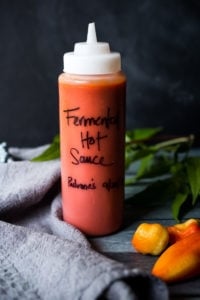
Fermented Hot Sauce
- Prep Time: 20 minutes
- Cook Time: 5 days
- Total Time: 120 hours 20 minutes
- Yield: 4 cups 1x
- Category: Sauces, fermenting, preserving
- Method: fermenting
- Cuisine: American
- Diet: Vegan
Description
A simple, delicious recipe for Fermented Hot Sauce using fresh summer chilies, with no special equipment and only 20 minutes of hands-on time!
Ingredients
Saltwater Brine: ( 1 1/4 teaspoon salt per 1 cup of warm water) This is roughly a 3% Brine. (3 grams of salt per 100g of water)
- 5 cups filtered water
- 6 1/4 teaspoons finely ground sea salt (or Pink Himalayan salt) – use 1 1/4 teaspoon salt, per 1 cup of water.
- 2 Quart Mason Jar
Fillings:
- 16 ounces fresh chili peppers, sliced in half (about 6-7 cups) seeds & stem removed, see notes
- 1 carrot, very thinly sliced 1/16th-inch (do not peel!)
- 4–8 garlic cloves, cut into quarters
- 1–2 shallots, sliced (or 1/2 an onion)
After fermenting, add optional seasonings to taste. Keep in mind the “heat” will mellow with age.
- optional: herbs (oregano, cilantro, celery leaves) and spices (cumin, coriander, chipotle powder, smoked paprika)
- 1–3 tablespoons apple cider vinegar, (optional- for extra tang and for more healthy probiotics)
- honey or sugar to taste (optional, good if making Sriracha style)
- If your hot sauce is not hot enough, you can always add cayenne or ground chipotle to taste. Free free to add spices ( 1/2- 1 teaspoon) cumin, coriander, chipotle, allspice, etc. Make this your own.
Instructions
- Wash your hands, jar and ustensils. Not sterilized, just clean. 🙂
- Stir sea salt into the water until dissolved.
- Slice the small hot peppers in half, and remove stems and seeds if you like (for less heat). If your pepper are very hot, wear gloves. If adding bell peppers to temper the heat, cut into thin strips. Thinly slice the carrot (do not peel), slice the shallots, and slice the garlic.
- Layer all into a clean 2-quart mason jar. Top with a cabbage leaf to hold things down (optional) and pour the brine into the jar over the chilies, pressing them down under the liquid. If you need to add more brine, remember to use the ratio of 1 1/4 teaspoon salt per 1 cup of water.
- Weigh everything down with a fermentation weight (or use a small ziplock bag filled with water to weigh the veggies down or try a clean shot glass). You want the chilies completely submerged under the brine. Anything that touches air, may mold, so either spoon it out or push it down. Cover loosely with a lid ( or cheesecloth and rubber band) and place the jar in a pan or bowl to collect any liquid that may bubble over. The lid is loose here so gasses can escape easily, but no creatures can get in.)
- Place in a cool dark place, like the basement, 65-70F is ideal, (or the bottom cupboard in the kitchen) for 5-10 days or until signs of fermentation.
- On day 3-5: Check for fermentation: Tap the container and see if any tiny bubbles rise to the surface, check for a cloudy brine ( see notes) or check the bowl underneath, to see if there was any overflow. All signs of activity! Ferment 7-10 days, long enough to soften those carrots that you will be blending. And you can always ferment longer for even more flavor- I’ll often ferment 12 -14 days. Sometimes I’ll ferment 7 days, then place the jar in the fridge for a few weeks before blending. The longer the ferment, the tangier and more flavorful this will become, and the more mellow the heat. *If there are no signs of fermentation, give it a couple more days- then check the troubleshooting section in the post.
- After 7 days and signs of fermentation, strain and SAVE the brine. Place the fermented peppers, onions, garlic, and carrots into a blender and discard the cabbage leaf. Add 1 cup of the brine and blend until smooth as possible. This may take a couple of minutes. Add the vinegar if using, (and honey if you prefer a sweeter hot sauce like Sriracha), and more brine to desired thickness. At this point, you can blend in optional spices and herbs. ( 1/2-1 teaspoon spices, 1-2 tablespoons fresh herbs).
- Don’t be alarmed if it is overly spicy- the heat level will significantly mellow with time, as it continues to ferment in the fridge after 1-2 weeks. Place in a squeeze bottle and store in the fridge, leaving the tip open (or loose) for gasses to escape.
- Do not place in a sealed jar unrefrigerated– this will result in an explosion– and a great big mess- as the hot sauce is still alive and fermenting! BE WARNED! I have the best luck with using in squeeze bottles and leaving the cap off in the fridge.
- If transporting to a friend as a gift, it is ok to seal for short periods of time (a few hours) but make sure to tell them to refrigerate it and loosen the lid, very soon after receiving.
- The flavors will continue to develop and get more complex over time, the heat mellowing.
- To use, cover the tip of the opening with your finger and give a shake before using.
- This will keep up to 12 months in the fridge (probably even longer!).
Notes
WATER: Regular tap water may contain too much chlorine in it, inhibiting the fermentation process (although our tap water works fine). If fermentation is not happening, you may want to try filtered water.
SALT: I use fine ground sea salt or Pink Himalayan salt . If using coarse ground salt you may need to add a pinch more.
Peppers: Use any chili pepper you like or a blend of different peppers (in the same color palate). To temper, the heat, feel free to add similar colored bell pepper -substitute sweet red, yellow, or green bell pepper. Keep in mind, you will be blending the sauce, so stick with the same color scheme to make a vibrant colored sauce. For example, mixing red and green peppers will result in a brown hot sauce– but up to you. 😉 Also, keep in mind, the fermentation will mellow the heat a little. Removing the seeds will help temper the heat.
RATIO: If you need more water to cover or fill the jar, use 1 1/4 teaspoon salt per cup of warm water.
You could easily halve this recipe or use two, quart-sized jars.
CLOUDY BRINE: A cloudy brine is a natural by-product of the fermentation process-a combination of lactic acid and yeast and is the reason why they call it Lacto-fermentation. It is a sign of fermentation. Various strains of bacteria are present on the surface of all plants, especially ones growing close to the ground. Lactobacillus bacteria convert sugar into lactic acid, preserving the peppers.Lactic acid prevents the growth of harmful bacteria. Over time the cloudiness can settle out of the brine to the bottom of the jar. Some batches are naturally cloudier than others, but all are safe to consume and taste delicious. A cloudy brine is a sign that you have a safe and successful ferment.
Signs of fermentation: liquid overflowing into the bowl (check the bowl to see if the jar overflowed, a good sign! Tiny bubbles rising to the top when you tap the jar. Cloudy brine, tangy flavor or smell.
Nutrition
- Serving Size: 1 tablespoon
- Calories: 4
- Sugar: 0.4 g
- Sodium: 112.3 mg
- Fat: 0 g
- Saturated Fat: 0 g
- Carbohydrates: 0.9 g
- Fiber: 0.2 g
- Protein: 0.1 g
- Cholesterol: 0 mg
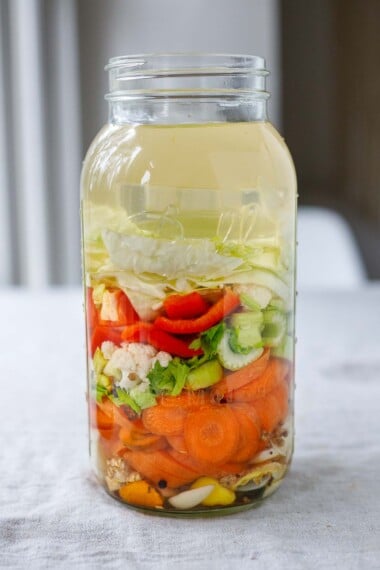
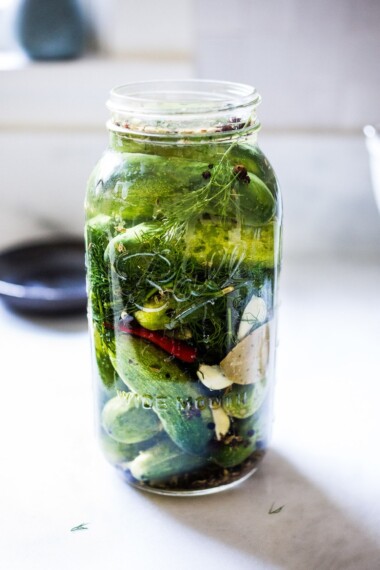
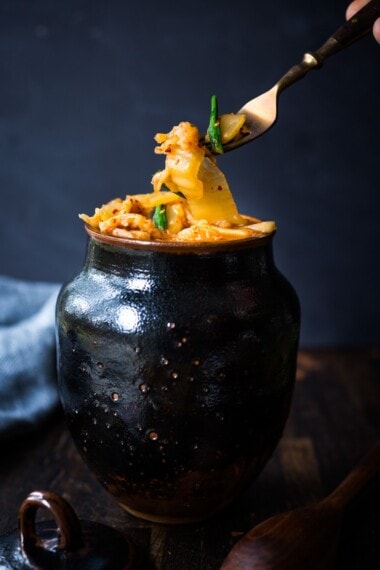
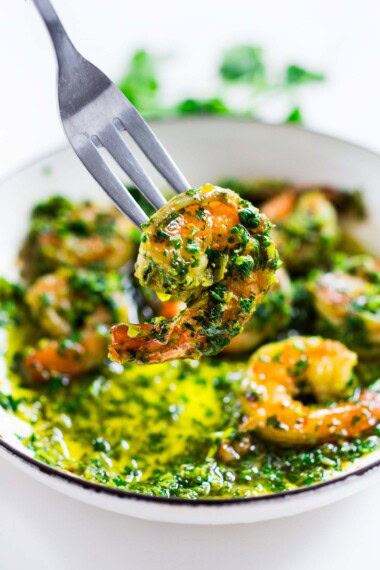
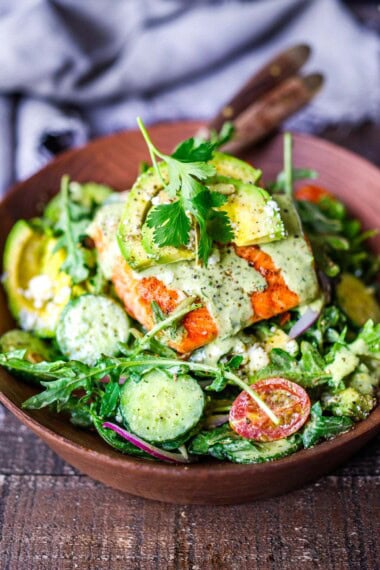
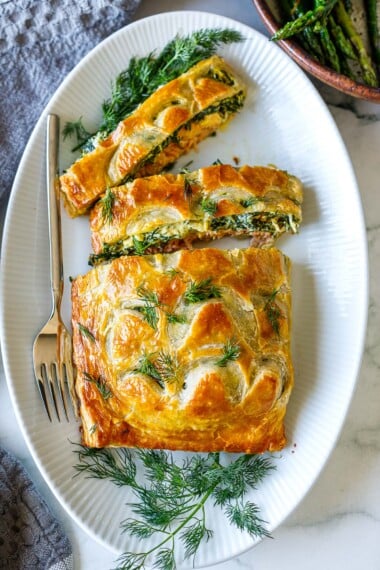
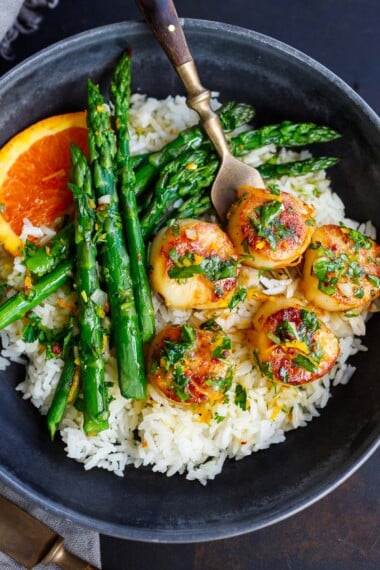
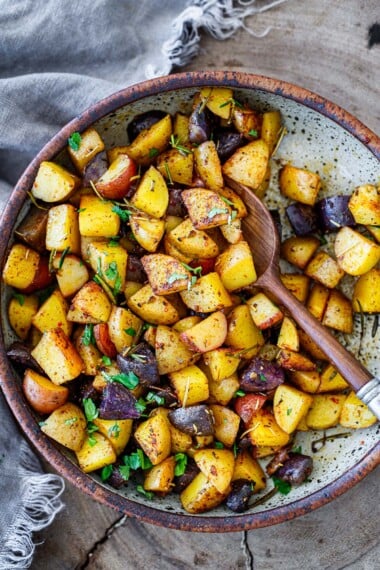
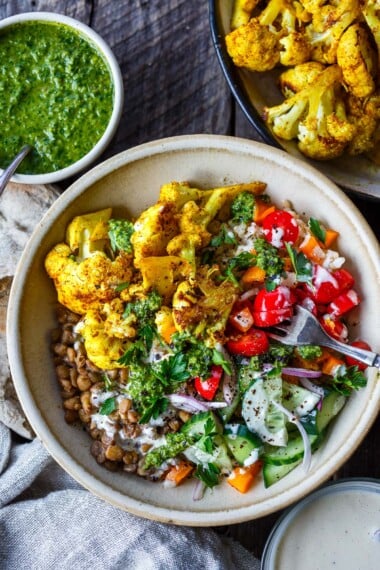
after almost a week i’m noticing a lot of debris in the fermentation brine. it seems to be settling on the peppers as a kind of “fuzzy” appearance so i wondered if it was mold. But its not pink and i don’t believe mold would grow under the water. Its kind of settling on the bottom of the jar too, so can i assume this is just normal product of the fermentation process and not something malignant?
Yes I think this is the by-product of Lacto fermentation. Is it cloudy? A cloudy brine is a natural by-product of the fermentation process-a combination of lactic acid and yeast and is the reason why they call it Lacto-fermentation. Various strains of bacteria are present on the surface of all plants, especially ones growing close to the ground. Lactobacillus bacteria converts sugars into lactic acid, preserving the peppers. Lactic acid prevents the growth of harmful bacteria. Over time the cloudiness can settle out of the brine to the bottom of the jar. Some batches are naturally cloudier than others, but all are safe to consume and taste delicious.
Cloudy brine is a sign that you have a safe, successful, and tasty ferment.
Yes its definitely cloudy and has the occasional bubbles coming to the surface. and there’s nothing growing at the top of the jar, so should be good right?
It sounds ok to me!
I have a habanero hot sauce recipe (canned) that involves adding lime and orange juices, do you think I could ferment habaneros and other veggies from this recipe and add fruit juices during the blending step? Same with zest?
Absolutely! Love this!
First time making this. I used the Ziploc with water as the weight. And a couple cilantro and pepper pieces still came up from the side of the bag no matter how little or full i filed the bag. I tried to keep it all veggies under the brine water as much as i could. I let it ferment 9 days. When i went back to look, there was mold all on the top layer and around the exposed veggies/herbs. I used clean jars as well. I will throw the whole thing away. Such a waste 🙁 i really want to make this hot sauce but i fear the same thing will happen again. It’s impossible to not let an herb float to the top. In the video a couple pieces were partially exposed to the air as well so i figured it was normal. But the MOLD THOUGH!!! any suggestions? My pepper plants are reaching their last harvest and i want to make this hot sauce! Thank you!!
Perhaps purchase a fermentation weight. If the mold is just at the top, you can still use the submerged veggies, just carefully remove the mold,
I tried this again. I put all the smaller bits on the bottom (as to not float to the top of the jar again) and put the larger bits of peppers on top. And then the Ziploc bag. It worked great! It all stayed below the liquid this time which kept it from molding. I let it ferment for about 9 days (i forgot it was in my closet toward the end😆 )and it was beautifully cloudy and really bubbly. I served it with lunch and it was great. Thank you for your help and thanks for sharing your recipe! I will be making a green batch next, now that the summer’s over. Happy fermenting!
Glad this worked for you!
Try again with something like this.
https://www.leevalley.com/en-ca/shop/kitchen/canning-and-preserving/76119-fermentation-sets
Thanks Matz! I did use the Ziploc method again but i will try these lids formy next batch. Thanks again!
I like the squeeze bottle idea, but its still a bit too chunky to come out of the bottle, no matter how much i blend it. Is there a trick to making it super smooth like the store bought kind?
Hi David! Are the carrots softening when fermenting? Make sure to cut them really thin and perhaps add a couple more days? Also you could snip more off the end of the squeeze bottle to make the opening bigger. Or lastly- feel free to strain some of the particles out. When you strain, it is easier to remove some of the bigger pieces then add back in however much you like.
What I do is ferment the hot pepper sauce ,once done I run everything through a Victorian strainer, then head the sauce to stop fermentation and can it in woozy bottles .
Great Marchus, thanks for sharing!
1. When you weigh the chilies down with a bag full of water or brine, do you screw the lid on tight?
2. Is it a big no to store it closed in a pop top bottle in the fridge? (How do you recommend sending this cross country?)
Hi, great questions. When fermenting I don’t screw on tight, because I tend to forget about things in the basement (haha!) and because this process causes gases, the pressure could make the jar explode unless using a jar specifically for this. So I just place the lid on top. The fridge is cooler so I can’t imagine it would pop, but if you are not using it often you may need to release the pressure occasionally. As far as shipping-to be honest, I’m not sure what to do here! A sealed container could theoretically pop. Definitely pack in ice packs. Maybe someone else has an idea?
Fun and easy to make. I loved picking out the peppers to use, the process was interesting, first time I’ve done something like this. I fermented for 6 days, added apple cider vinegar when blending, separated the batch into two and added chipotle to one. Huge hit with my husband who ate it like it was salsa (though it was blended thin).
Yay!!! Great to hear!
I will be making this for sure. However, I have a suggested improvement to the method – don’t use water in your ziploc bags. Just use more of the same brine! If the brine filled bag springs a leak, it won’t upset the ratio of salt to liquid in your fermenting veg like a bag with plain water would. Thank you VERY much for this, I had a habenero in a planter fall down about 30 feet, and while some of the plant survived, I have about 18 green habenero that I need to do something with, pronto!
Great idea!
I just finished fermenting my peppers for 7 days. There was a thin cloudy layer at the bottom on the jars. Is this normal?
This is totally normal- a sign of Lacto-fermentation. Which is a good sign!
I keep hearing you should keep the fermentation airtight to promote the ‘good’ bacteria and not the bad. i’m keeping everything submerged under the brine with very little headspace at the top of the jar and covered it with cheesecloth secured with a rubber band. Is this ok or do you think i might have spoiled it by not keeping it airtight?
It does sound OK. I never keep mine airtight, and have never heard that?
Great recipe, Sylvia!
I just had one question.
I am just curious if you are putting a salt water solution in the plastic bag you’re using to hold the peppers under the brine (?).
If it’s just tap water in the bag, osmosis is inevitably going to occur, and it’s going to dilute the salt water content of the brine slightly.
Is that an issue? Or does it ferment quickly enough where osmosis is not an issue here?
Thanks again for the recipe.
Hi Mark, I guess I’m not uderstanding at what you are saying. Over my head! 😂 I don’t put salt water in the bag, just water, to weigh it down.
Plastic bags are not that permeable! You’re only leaving it in there for a week. It’s not going to affect salt concentration in any appreciable way.
I make hot sauce with similar ingredients, but I blend everything first, then stir in whey and ferment for up to 6 weeks, with occasional stirs to keep it blended from the bottom. I once read that the live bacteria in a ferment don’t really like to be disturbed by blending or too much other agitation, so I blend mine first. I also use vacuum perfect fermenter lids. Also, regarding any formation “mold”, what may be occurring is white Kahm yeast growth, which is not harmful and is not mold, but should be skimmed off for better flavor. If an off-color hairy looking mold is actually growing on top, throw the whole thing out. Any comments??? Thanks!
Sorry I was responding to a different comment and it got misplaced. This is helpful Steve, really useful info and I appreciate you sharing! I’ve always done the blending after, because everything softens when it ferments, but I’ll have to try it your way next time!
We loved everything about this recipe: deep taste, hot but not too, healthy fermentation. The fermentation did add a more complex octave to the taste. We added 2 red bell peppers and a vine ripened tomato to pop the color and add even more flavor, used habanero plus a couple hatch peppers, then added oregano, cilantro, and a touch of allspice.
Awesome, love the addition of allspice!
Hi, I put some smaller chilies in whole but cut up the rest of the larger (superhots) in to it ? will this cause any issues . Brad
should be fine!
Simple and easy.
Awesome 🙌 Great to hear and glad you enjoyed this!
I see this says don’t use frozen peppers. Could I use previously frozen but thawed peppers? Maybe that’s a stupid question, but I have a bunch of frozen hot peppers that I need to use up.
So, some people are saying that frozen peppers are actually working for them. I only hesitate because the healthy bacteria needed to ferment has been frozen- and I’m not sure if that kills it? I have not tried with frozen peppers personally. If it were me though, I would add fresh to the frozen.
Can I make this recipe with chilies that have been dried?
Hey David, great question. I haven’t tried using dried peppers. My guess is because they are dried, they don’t have the living bacteria on there that starts the fermentation.
Do you think dried chilies may work if some fresh chilies are added? Thanks.
I do! It certainly would add complexity and flavor! I think I’ll try that too! Love it David- thanks!
Hi, can you freeze the sauce once it’s done?
yes, but you may lose the pretty color.
Won’t freezing kill the good bacteria from fermenting?
Yes, I thought the same, but now there is debate on this. Some say probiotics/bacteria can be frozen- not all the bacteria may survive but most will. 🙂
I’m going to try this with my jalapeños this weekend, and have a few questions..
can i freeze the finnished sauce?
Once the sauce is in the fridge, it can be sealed tight right?
Thanks! 🙂
Yes, you can freeze, but it may lose its lovely color. Yes you can seal in the fridge, but I don’t do a tight lid ( unlesss you remember to burp occasionally) It is technically still fermenting.;)
Hi. I didn’t add a weight to keep everything submerged and now the top is all moldy after 5 days. Do you think i could skim the top off and still use it?
That is what I would do!
I have made this four times now varying the “add-ons” each time. I left the last batch 4 MONTHS in the fermenting jar. Fantasic all four batches
Thank you
Thanks Alan, glad you like it. 🙂
Hello! I just had a question. I’ve been letting my peppers ferment for 12 days. Do you think they’re still okay to make hot sauce out of? I put them in my garage and completely forgot about them.
As long as you see bubbles or “action”, they are doing great! You can ferment for longer periods of time- no problem.
I left my last batch 4 months and bottles it tonight. Fantasic. I add honey and red wine vinegar “to taste” at the time of bottling
On the last day of fermentation and it’s looking beautiful! I decided to let it go for a few more days to give it a little extra love☺️
After straning it, is there anything you do with the reserved brine? I really don’t want to toss!
So depending on hot your peppers are- I’ll do brine shots- keep it in the fridge and just drink it! Sometimes not doable with extra spicy peppers. Add to soup?
You can used it to brine chicken!
What a great idea!!!
Do you have to use fresh peppers for this recipe? We freeze a lot of peppers from our garden every year and love to find cool uses for the excess jalapeños and serrano’s. When defrosted they can let off liquid and not sure if that would hinder this recipe at all? If anyone has used previously frozen peppers please advise!
There are several people that have tried this with frozen peppers with good results. I would thaw then place over over a strainer for several hours before using in the recipe.
I’ve heard from other folks that if you’re going to use froze it’s best to mix with fresh veggies.
That’s what I would do.
Hey, I’ve fermented a few jars almost exactly like this, and it turns out fantastic – your recipe is pretty much spot-on based on my experience. I’ve had one boo-boo, though: I made an error with one of my jars, and I’m not sure what to do with it; I’m probably just going to blend it up and see how it is. Basically, I had a jar fermenting for a few days, and it sorta over-flowed (my weight sunk down and caused the liquid to overflow), and some of the veggies were exposed. So then, to “fix” this mess, I ended up adding some fresh brine BUUUT I think I added way too much salt (I suspect, in my haste, I mixed _tablespoons_ of salt instead of _teaspoons_). As a consequence, it stopped bubbling up at all, and it doesn’t smell as “pickly” if you know what I mean. Any thoughts? It hasn’t gone any weird colours, nor is there any mould or other nasties. As I said, I’m just going to strain/blend it and make some sauce anyway … but I’d like to see if you had any input.
Too much salt can kill all the bacteria- even the good kind that you need to ferment. I wonder if that happened?
Hello!
Made this twice, fantastic results thanks!
Just wondering previsous two versions were done with Cow Horn peppers, then I switched it up and did the latest batch with Habaneros, not realizing how hot they can be!
I am wondering if I can extended the fermention period in order to mellow out the heat of the peppers.
What do you think?
I think that would be fine! Or ferment some bell peppers and blend?
I love this hot sauce, fun to try different ingredients and so easy to make. But, I can’t seem to get a nice smooth consistency of the end product. It still has “pieces” of pepper. Are you using a typical home blender? About how long do you blend? Anyone tried straining after blending or a food mill?
I blend a really really long time, to get it as smooth as possible. I use a regular home blender. You can strain some out if you prefer.
Hi Hoss,
One of my co-workers did exactly that, after fermenting and blending, they strained it by putting it into a cheese-cloth and twisting it tight. The resulting liquid can be thickened up using some xanthan gum if you want – it gives the best consistency.
Get a vitamix!! So worth it.